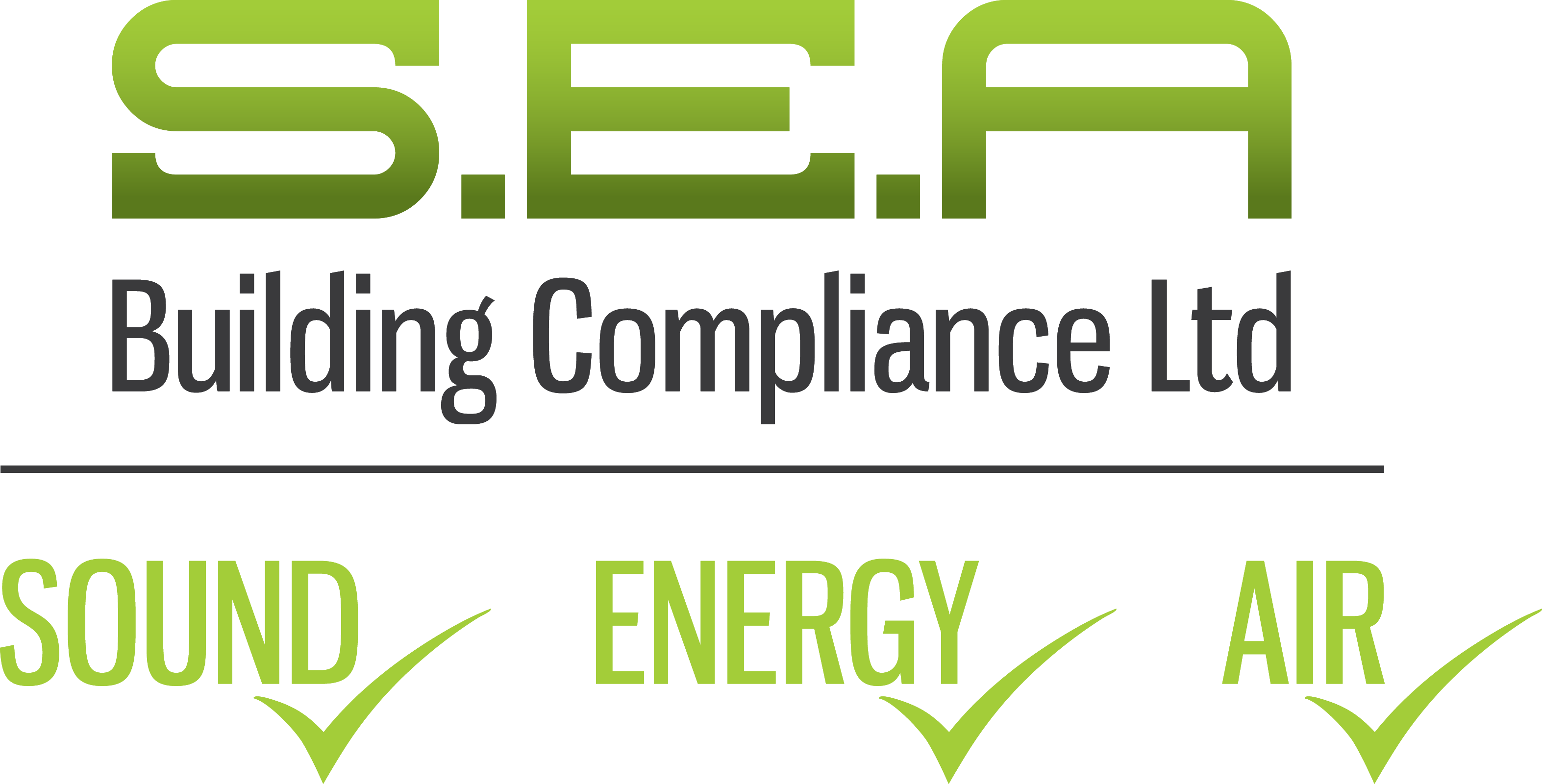b&m has worked with S.E.A. Building Compliance on many projects over several years – we asked Director, Tom Owen who heads up the pre-commencement works team a few questions about the latest changes to Part L of the building regulations and the impact it is having on project design.
What is Part L?
Part L of the Building Regulations relates to the conservation of fuel and power, setting standards for the energy performance of new and existing buildings.
Why is there an update?
The update to the standards forms part of the UK’s broader commitment to combat climate change and transition to a greener, more sustainable built environment.
The UK government has set a target of 2050 to achieve net zero carbon emissions – Part L is just one aspect of the Future Homes Standard (residential) and Future Buildings Standard (non-residential); aimed at significantly improving the energy efficiency and sustainability of buildings.

In what way has the new Part L impacted how buildings are designed?
The main impact is the need for compliance assessors to be brought in earlier, during the design process. Previously this input would be sought at RIBA Stage 3 or 4 after the building regulations drawings had been submitted and the technical design had commenced. However, now that the design rests upon the Part L calculations this input is required at the very start to help inform key design decisions such as the orientation of a building.
There is much more work to do in terms of calculations and planning – it’s taking far longer for each job, and consultant fees have increased to reflect this.
In addition to the changes in Part L across the UK, there are also local authority requirements to consider. Each local authority area has different requirements, so you need to know what you’re dealing with to get it right. In Brighton, for example, a 20% improvement on building regs is required whilst in Thanet it’s a 50% improvement on carbon emissions.
Each area we look at has parameters, and the spectrum of tolerance for each of these has reduced significantly. For example, if a building requires large areas of glazing, the requirements for glazing need to be met, but so do the requirements for energy use and conservation across other aspects of the build including insulation and heating.
A successful and compliant design is dependent on a multitude of factors working well together. The ability to factor in adjustments to meet the requirements late in the design process is now greatly reduced and so getting it right from the start is the best way to avoid additional fees and delay for redesign.
What is the interplay between Part L, Part F and Part O?
Overheating is a factor during warmer weather, so designs need to consider and address this. Part F, ventilation, must be designed to work together with Part L for both sets of requirements to be met and also to give each aspect the best chance of being effective. There is little point in getting one right and the other slightly wrong – the wrong one will counter-act your efforts with the other.
For example, glazing – how much there is, and the orientation of the building will impact Part O – a huge window on a south or west facing wall will have a greater impact on overheating than on a north-facing wall.
Similarly, a small south-facing window may have the same impact as a large north-facing one. The south or west facing glazing may also need a greater ventilation rate/lower g-values on the glazing in these areas or even cooling systems to mitigate the overheating risk – another factor to add into the calculations which also impacts on design and cost.
Design might be amended early on to look at how to have a large window but also to reduce overheating risk – but it needs to be calculated much earlier on to meet the current Part O requirements.
The Part O calculations need to be fed back into the SAP calculations to ensure a happy medium is met. Reduced g-values to mitigate overheating will increase the heating demand within SAP which will have a negative impact on the overall SAP calculations. Likewise, if larger ventilation systems or cooling are required to meet the Part O requirements this will increase the carbon emissions of the dwelling and impact on the overall SAP ratings.
Similarly, higher-performing insulation is not much use if the glazing is not up to scratch – what you conserve through insulation will be lost through poor glazing. The greatest benefits are seen when the different aspects of the design are working well together.
To be most beneficial, everything needs to be taken into consideration – SAP is now demanding more detailed information for the heating, hot water, lighting, ventilation, shower flow rates etc, along with the introduction of solar PV to the notional building. The fabric standards have become tighter, and this is increasing insulation levels. In addition to this we are now required to have calculated Psi junction values produces to cover off all linear thermal bridges. This is why it is key to getting the Part L and Part O assessors onboard as early as possible.
What are the cost implications associated with meeting the new Part L?
Cost is a major sticking point. Put simply, it is more expensive to achieve Part L compliance. If you consider the extra consultancy costs at the start, plus the costs of the new technology aimed at carbon reduction, it all adds up.
Clients frequently initiate their projects with a commitment to maximise sustainability, aiming for features like gas-free systems, heat pumps, efficient glazing, solar panels, and increased insulation performance. However, once the design is completed, it often surpasses their budget constraints. Consequently, compromises are made to strike the right balance between achieving the best possible energy efficiency to the cost to build out the dwellings. It’s crucial to strive for a scenario where all sustainability measures are financially feasible, ensuring optimal synergy and outcomes.
At the moment, gas is still 4 to 5 times cheaper per unit cost than electricity, which has an impact on the overall EPC ratings. Although Air Source Heat Pumps are better for the environment this pulls down the EPC ratings due to the unit cost difference. Many clients are now dictating certain levels of EPC ratings within their ER’s, so the move to zero gas isn’t straight forward for new builds.
We also have a huge proportion of old housing stock in the UK – which will be very expensive and invasive to move to renewable energy technology. Subsequently the aim to achieve net zero will be hard to meet with this as a factor and more thought is needed on how we can solve this problem.
The government estimate is around £3,000 to upgrade a property to new energy efficient standards but in reality, this cost is far greater. The cost of swapping a gas boiler for an air source heat pump is in the region of £7,000 – which isn’t a very desirable option, particularly given that electricity prices are so high.
What is the impact on the construction process/the contractor’s duties?
Part L requires a lot of evidence to be shown along the timeline of the build. Photographic evidence has been introduced and these pictures must be geo-cached; to prove that the photo is of a specific property.
S.E.A Building Compliance have invested significant time and money into creating an app to make this job easier – however this responsibility ultimately falls to the contractor.
The Site Manager 360 app allows main contractors/house builders to gather this information required and ensure they capture the correct images along with them being geo cached.
The Site Manager 360 platform allows site managers to have easy access to all dwellings on their phones to gather this information as they carry out their duties on site.
Site Manager 360 makes that process simple, also allowing you to compile and share compliance certification & reports

What are some key take-aways from projects you have worked on recently?
Legacy projects, which were given planning permission before the changes and have yet to start have been the most affected. There was a period of grace, but only if you had made a meaningful start to all properties on the project. For a 100-unit development, the foundations and drainage would need to have been started for all units to qualify, which is not how sites are developed. Many developers are now having to re-design to meet Part L and Part O requirements which have moved on significantly since their original planning approval. The uplift from SAP 2009 to 2012 SAP was 6%; on the latest, it was 34%. If you add to that what’s coming in 2025 as part of the Future Homes Standard, it’ll be around a 70% uplift from 2012 to 2025…an increase which is making it harder to plan ahead for.
Conclusion
The targets for working towards carbon neutrality have been set and the industry has just been told to make it happen with very restricted parameters to work within. Many factors are working against new and current projects, including the cost of materials, red tape, differences in local authority requirements, time needed, and general understanding of what’s required.
The latest changes to Part L represent a huge step towards the government’s carbon neutrality targets. The whole industry needs to change and work together to find a way to achieve what is going to be required in the coming years.



